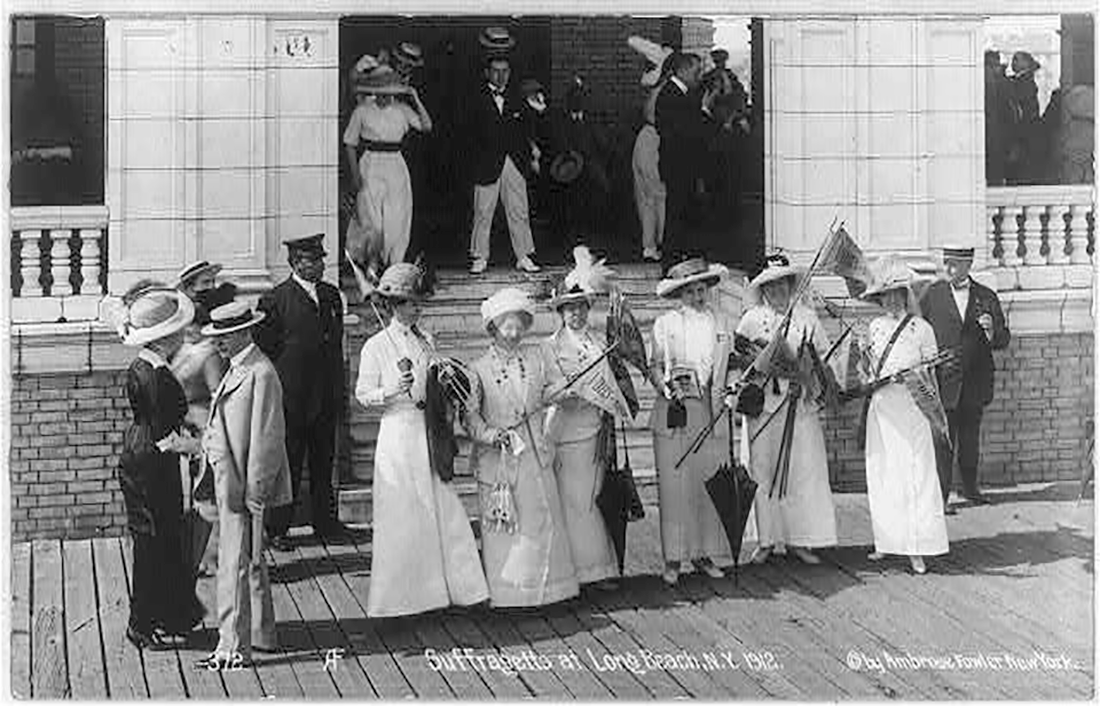By Anna Foley
Wearing white after Labor Day has long been considered a fashion faux pas in many circles. Yet Paola Aguilar is donning the out-of-season style today for a very specific reason: to pay tribute to the feminist movement when she casts her vote in the 2016 election.
“As a feminist, I believe that part of wanting the advancement of gender equality is also recognizing what has already been done by other women,” said Aguilar, a University of Idaho student.
The color white, has deep roots in the feminist movement. It was one of the main colors suffragettes wore as they fought for the right to vote at the turn of the century. The color played into certain cultural perceptions of women in the early 20th century, according to Kate Haulman, a history professor at an American University.
“White played into the Victorian ideals of purity and virtue,” Haulman said. “But it also signified that the suffragettes wanted to be visible. They were reviled by many, and their movement was seen as too public. They wanted to be seen.”
Since then, female politicians have worn white to stand in solidarity with the women fighting for the right to vote. Shirley Chisholm wore the color when she was elected the first African-American woman to Congress in 1969. Geraldine Ferraro, the first female candidate for vice president, wore white when she accepted the nomination at the 1984 Democratic nomination. Hillary Clinton also wore white when she accepted her nomination at the 2016 convention.
Haulman said the choice to wear white is intentional.
“Fashion is political; clothing is political,” Haulman said. “The clothes we wear as women act as a platform for our beliefs. We wear our morals on our bodies, quite literally.”
Quite a few women plan to wear their morals on their bodies on Election Day. Under the Twitter hashtag #WearWhiteToVote, several women expressed plans to stand in solidarity by wearing the storied color.
#WearWhiteToVote 🇺🇸 pic.twitter.com/CFIFs2mb4W
— Liz DiCorpo-Ross (@ShaneandlizRoss) November 8, 2016
I am wearing white to vote today in honor of the suffragettes who worked tirelessly for the right to vote! #WearWhiteToVote
— Kathleen Rupert (@katerupert) November 8, 2016
My 1st #Vote as an American-> @BarackObama my 2nd->the 1st woman running x presidency @HillaryClinton #ImWithHer #IVoted #WearWhiteToVote pic.twitter.com/3hQ0oifklt
— Maria Riboli (@Maria_Riboli) November 8, 2016
#WearWhiteToVote I’m honoring Black Suffragists like Mary Church Terrell today and wearing white – https://t.co/Vecs1YAdHN pic.twitter.com/qC3EYSMp2o
— Denise Oliver-Velez (@Deoliver47) November 8, 2016
Did the damn thing with my lady friends. 🇺🇸👸🏼📢✅💖✨#WearWhiteToVote #ImWithHer @smrtgrls @HillaryClinton pic.twitter.com/6Nqa6wf9az
— Lauren Koontz (@lauren_koontz) November 8, 2016
Haulman noted that while modern efforts to wear white as a feminist symbol has been widely adopted, the suffragettes were often not so accepting.
“The color white meant purity, often in the racial sense, too,” Haulman said. “Suffragettes could be quite racist.”
As a woman of color, Aguilar said that particular point in feminist history was troubling for her. Still, she decided to wear white on Election Day.
“While I understand that the women’s suffrage movement in the United States was not very intersectional, I am still benefitting from the work of the suffragettes,” Aguilar said. “Today, I am privileged to be studying at a higher education institution, I get to speak publicly about my political opinions, and I get to vote. Someone had to work for me to have these privileges and wearing white is a simple way to pay homage to the work of those women.”
Given the language of this particular election, women standing in solidarity with other women is refreshing to Haulman. She can’t help but draw parallels between the past and today.
“Perhaps the suffragettes were the ‘nasty women’ of their day,” Haulman said.
Save

